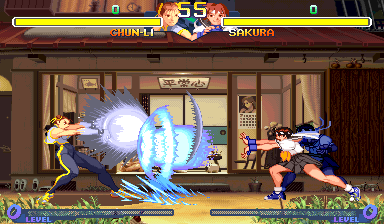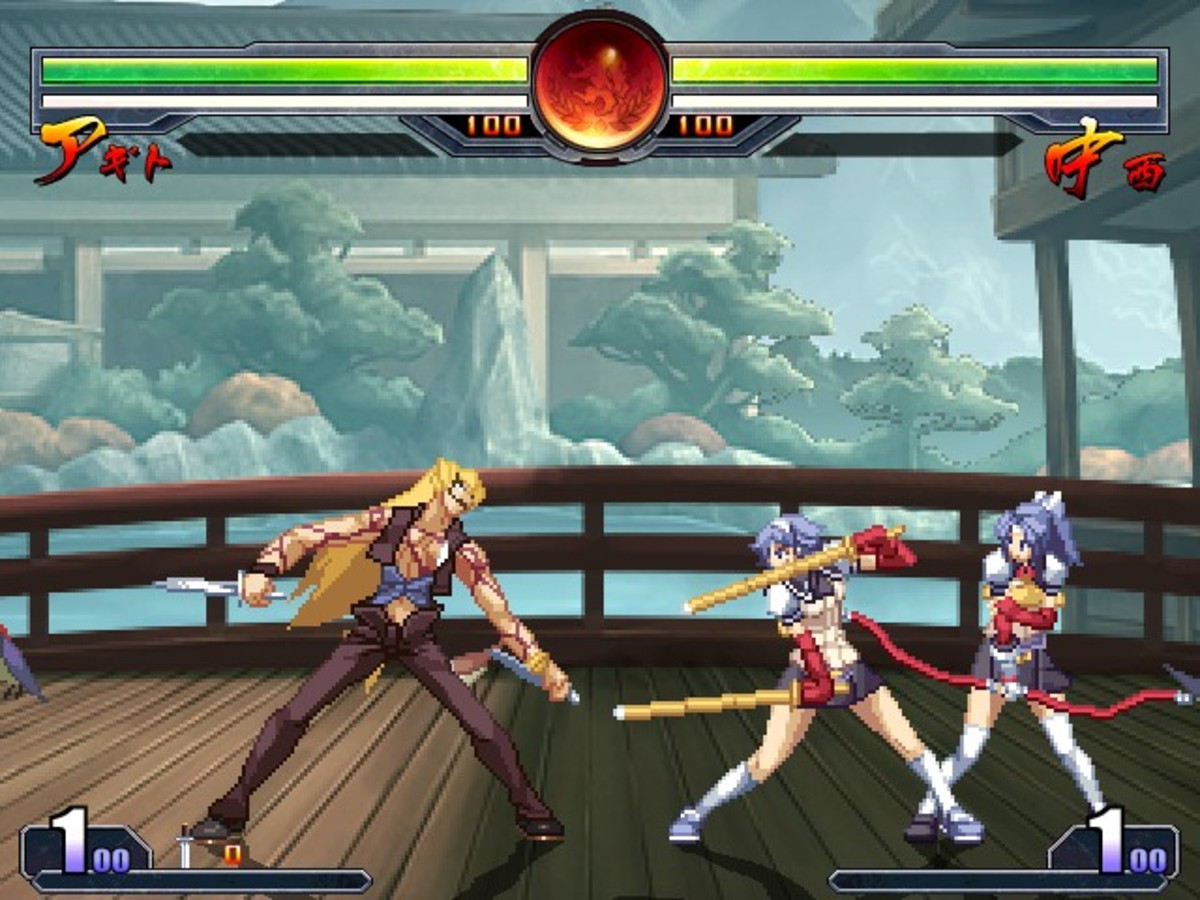Understanding fighting games.
Street fighting in the streets!

Definition of a fighting game.
Before we begin, let's take a brief moment to define what a fighting game is. By nature, a fighting game is a competitive game in which two people battle against each other and each have a life bar. One person fights the other until the other person's life bar has been depleted. Most fighting games have a variety of bars, mechanics, techniques, characters and moves that can be completely overwhelming to those who don't have a degree in doing insane combos while using a $150 arcade stick and practicing 6 hours a day. True, for some fighting games it can be darn near soul crushing to learn a fighting game and using all of its systems and techniques effectively, but it doesn't have to be with the right mindset and ambition. All it takes is:
- Patience
- Time
- Lots of practice
- A good community
2D fighting games
2D fighting games were prominent back in the 90s. These type of games are fought in a fixed position on the screen. Characters are only able to move in the foreground left and right, as well as crouching and jumping. The background can be very lively with full animation and characters moving in the background. Games in this category are very popular still to this day, and are highly valued as the golden age of fighting games. These include but are not limited to:
- Street Fighter 2
- Mortal Kombat 2
- Darkstalkers
- King of Fighters
3D fighting games
Games in this category allow the player to move around in multiple directions. The characters as well as the background are all usually three dimensional and have full animation. Players are allowed to move freely in the environment, foreground and sometimes the background as well. Attacks can often hit in multiple directions, but the players can dodge attacks from all sides as well. Games that are prominent in this category are typically long running franchises that have been around since the mid 90s or are popular as of today. These include:
- Tekken
- Soul Calibur
- Naruto Ultimate Ninja
- Dead or Alive
Fighters of all shapes and sizes
Fighters are pretty much the heart of any fighting game, and without them there would be no point or interest in playing at all. Characters all come in many varieties of strength, defense, speed and technique. To break it down:
- Strength refers to how strong a character is in regards to their attack power.
- Defense refers to how well a character can guard against attacks without taking much damage.
- Speed means how fast a character can move.
- Technique is relevant to how easy or difficult a character is to use. Some characters require precise execution, while others are easy to control and play with.
Sometimes in fighting games the main fighter will have a good balance of all four of these elements, making them easy to use for beginners who are new to the game. Then there are other characters that excel at being powerful but are really slow. Another subset of characters will be quick on their feet but have poor defense on their side. Lastly, a slew of characters will have a large variety of moves to master, making them complicated to use or require a high amount of execution. There is no one character that is the best in the game, it is all a matter of preference. Some people prefer to go all out with powerful attacks, while others like having a good balance of power and speed or technique and defense. It just depends on your playing style.
Favorite fighting games
What is your favorite fighting game?
How the heck do I do that combo?
So now that we got all of that out of the way, now we can get to the fun part: playing fighting games. It's not really as hard as it sounds, depending on the game of course. Some are easier to play than others, but it shouldn't deter you from trying them. This brings me to a important P: Patience. You aren't going to learn everything about the mechanics of a game in one go. For some it will take hours. For others, it will take days depending on the learning curve of the game itself. As long as you learn at your own pace and don't try to rush things, you're going to do just fine. A good rule of thumb: go by the tutorial if there is one. If not, take it to the training option if the game has one and read the manual. I know some purists don't read manuals for fighting games, but if it's worth learning then it's worth reading.
Editor's tips:
- Don't always go for the most popular character that other people use. Most popular character doesn't always mean the easier character to use.
- Training mode is your best friend. Utilize any and all options it has to offer, whether it be fighting against a practice AI, working on your move execution skills, finding out which attacks beat out which, and much more.
Choose your character!
Picking a character to play is as easy as shooting monkeys in a barrel. While some fighting games have an expansive amount of characters to use, it is not necessary to learn all of them. Pick a character that you meld well with, take them to the training room and learn their moves. See what they can do, what they can't do, how they play and what they excel at. I personally like to pick characters based on speed, technique and overall gameplay. Then I'll take them to the training room, practice on my own, then maybe watch a few gameplay videos of that character in action and pick a few tricks up myself. The important thing to do is experiment with most of the characters until you find one or two that you feel comfortable with. If you prefer characters that can pack a punch, go for it. Like confusing your character and keeping them guessing? A technical character would be a good fit for you.
Fightstick or controller? Your choice!
For players who want to have that arcade feel of the game at home, they will purchase a fightstick or fightpad. Both of these items happen to have the same layout as an arcade cabinet or at least close to it. They have a small metal pole with a metal ball attached to the top for optimum movement, and at least four or more buttons on the surface. Some use them because it gives them excellent move execution and better handling. Personally I prefer to use a controller. It allows me to have precise control over my character without having to worry about making any unnecessary errors that occur due to poor handling. It is all a matter of what you like to use, as there is no advantage from using one over the other.
Conclusion:
This is all I have to go over for fighting games. If I left anything out or were unclear about anything, please let me know in the comments below. It's my first hub so I'm still learning the ins and outs here. Thanks again for giving this a read if you were able to. See all you crazy fighters out there!



